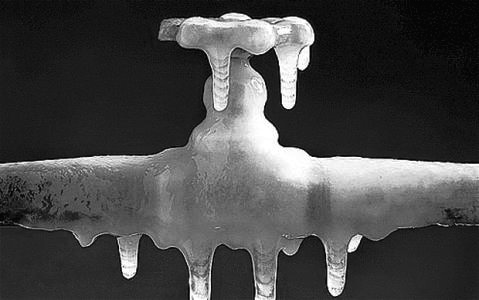Hamptons Home:Prepare for a Frozen Pipe Disaster?
I have been hearing about several homes in the Hamptons whose pipes have froze from this brutally cold winter we are experiencing. I have lived in Sag Harbor for the last 14 years and this is by far my coldest winter. I know that a lot of my neighbors have had to seek advice from plumbers, like Paul the plumber (https://www.paultheplumbernh.com/) on what to do if, or when, their pipes completely freeze.
Every winter season, the pipes in your home are at risk of damage from freezing conditions and therefore are in need of copper pipe repair works. Low temperatures can cause your water pipes to freeze, and in some cases burst. The following tips can help you safeguard your home before, during and after a pipe freezes.
Prevent Your Pipes From Freezing
- Disconnect all gardening hoses and install covers on all outside faucets.
- Keep your house temperature at 68 degrees or higher, even if you’re leaving the house for an extended period of time.
- Open cabinet doors below sinks to allow heat from the home to circulate.
- Identify the location of the main water valve and the valve on your water heater. (Learning the location of these valves may come in handy during an emergency.)
- Wrap pipes nearest exterior walls and in crawl spaces with pipe insulation or with heating tape. This can prevent freezing, especially for interior pipes that run along outside walls.
- Close all windows near water pipes; cover or close open-air vents. Freezing temperatures combined with wind drafts can cause pipes to freeze more frequently.
- Heat your basement and consider weather sealing your windows.
- Insulate outside walls and unheated areas of your home.
- If you plan to be away from home for an extended period of time, shut off water supply valves to your washing machine. If you’re worried about having plumbing or pipe issues, you don’t need to be. There are plenty of fantastic Water line repair companies that will help you if you need plumbing repairs.
Monitor Freezing Pipe Conditions
- Allow a faucet to drip slightly (lukewarm water) in order to minimize freezing.
- The first sign of freezing is reduced water flow from a faucet.
- Check your faucets for water flow and pressure before you go to sleep and again when you wake up.
- Check pipes around your water meter, in unheated areas, near exterior walls and in crawl spaces.
- These tend to be vulnerable to freezing conditions.
- Identify cold air drafts coming in from a flue or chimney chase and caulk gaps that are near pipes.
If a Pipe Freezes
- If a faucet or pipe inside your house freezes, you can thaw it using a good hair dryer. (For safety purposes, avoid operating a hair dryer around standing water.)
- To thaw a frozen pipe, heat water on the stove, soak towels in the hot water and wrap them around cold sections of the pipes.
- When thawing a pipe, start thawing it nearest to the faucet. Make sure the faucet is turned on so that melted water can drip out.
If a Pipe Bursts
- Shut off water at the main valve.
- If the break is in a hot water pipe, the valve on top of the water heater should be closed.
- Call a plumber, you can find some on handy.com plumbers. Keep an emergency number nearby for quick access if you suddenly have a plumbing disaster.
information provided by Allstate



Comments are closed.